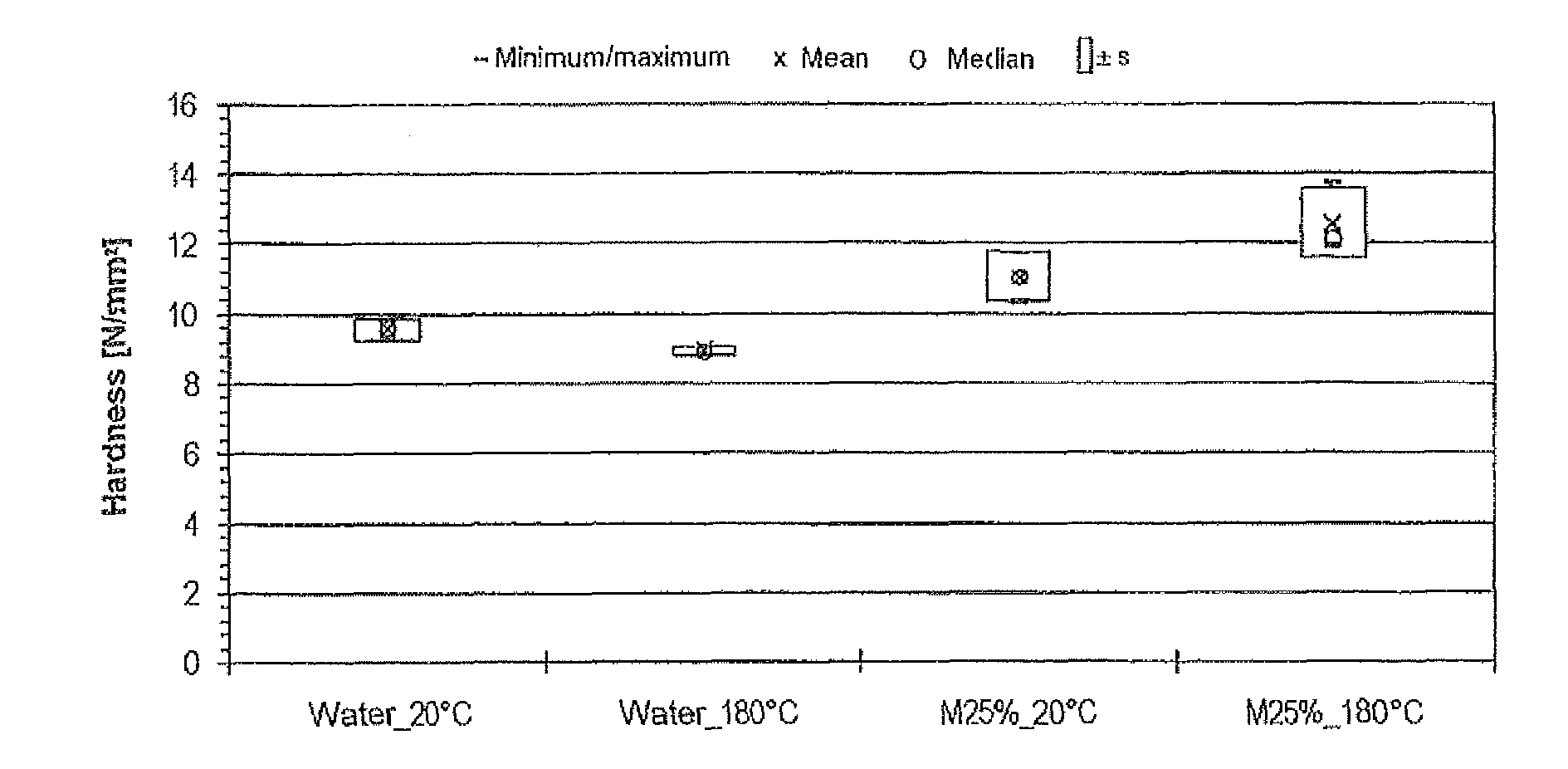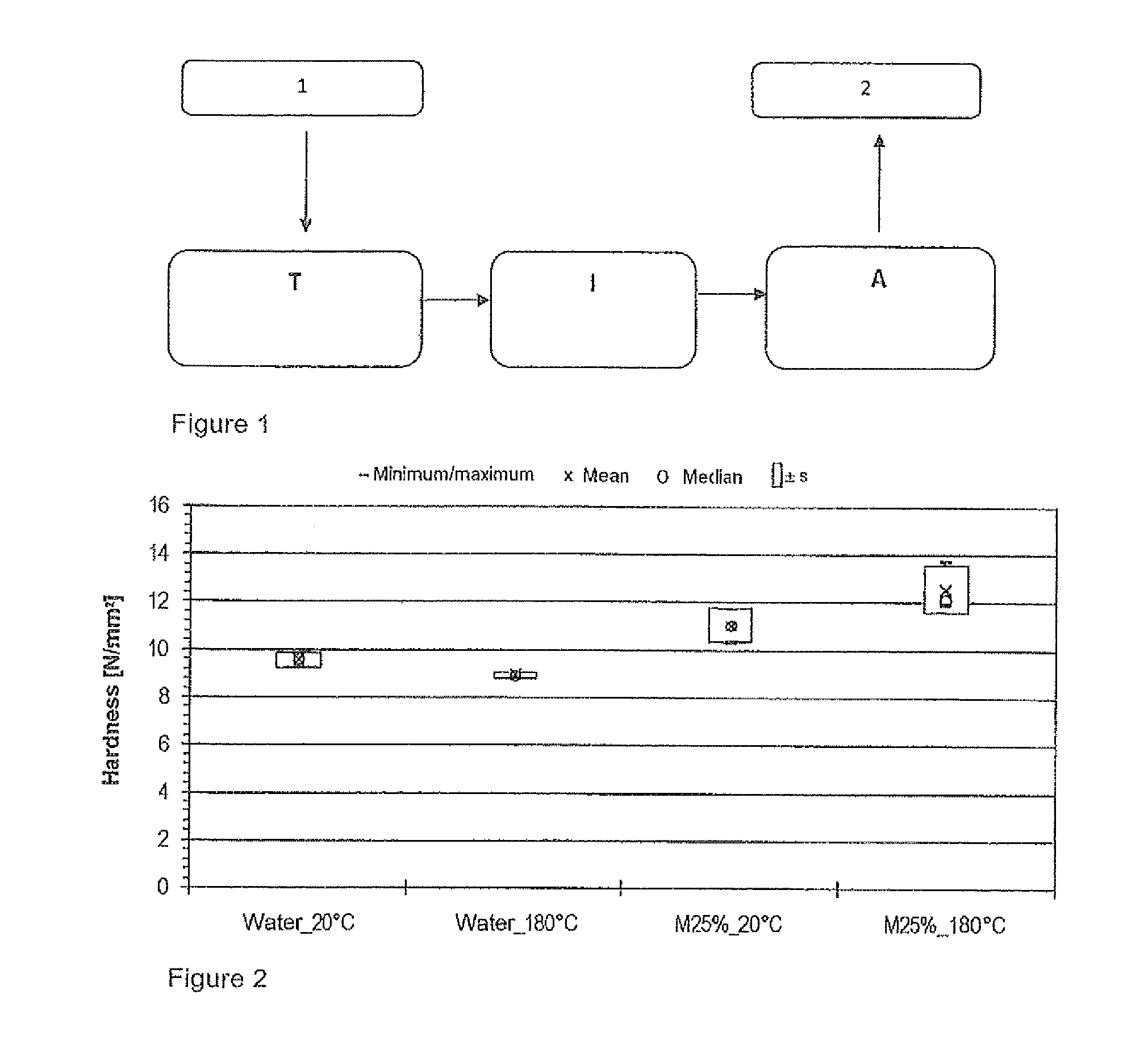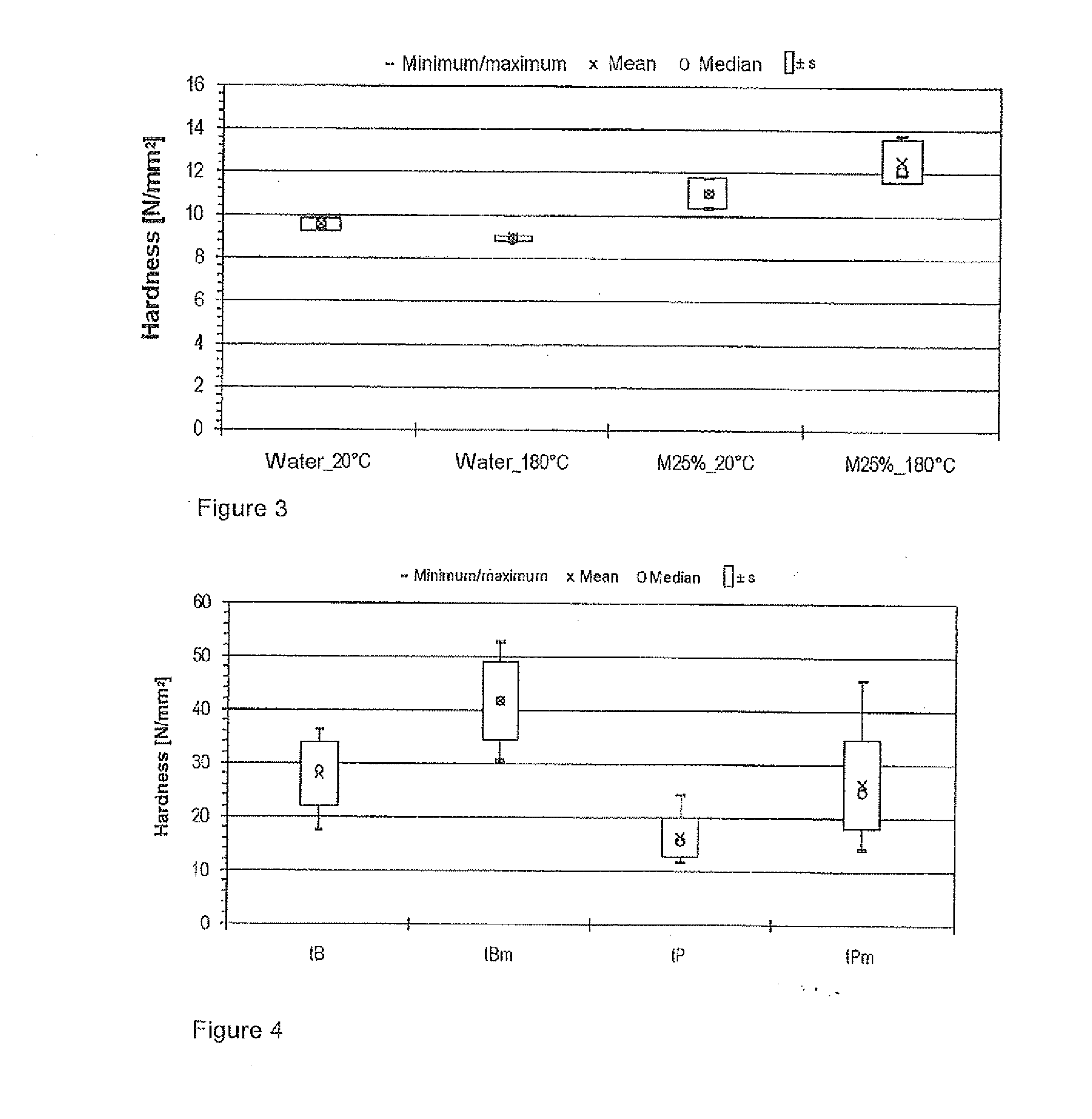Method for Treating Wood and Wood-Based Materials, and Wood and Wood-Based Materials Obtainable Therewith
a technology of which is applied in the field of treating and obtainable wood and wood-based materials. it can solve the problems of reducing mechanical strength, reducing surface hardness, and odor-like burns
- Summary
- Abstract
- Description
- Claims
- Application Information
AI Technical Summary
Benefits of technology
Problems solved by technology
Method used
Image
Examples
example 1
[0076]Surface hardness
[0077]For the combination treatment comprising MF resin modification and thermal modification of wood in one process step, sapwood of the pine (Pinus sylvestris) was used as starting material.
[0078]The composition of the melamine solutions consisted of 25% Madurit MW 840 / 75WA (INEOS MELAMINES GmbH) with a solids content of 75%. The solution was also stabilized with 0.2% to 5% triethanol, and the pH was adjusted, using 5% strength NaOH, to 8 to 12, preferably 9 to 11.
[0079]18 test specimens (25×25×25 mm3) were impregnated with the 25% MF resin solution. For reference investigations, 18 test specimens were impregnated with water.
[0080]The wood was impregnated in a vacuum pressure process as used in the wood industry. The following figures for the treatment pressures selected are based in each case on a standard pressure of 1.013 bar. The preliminary vacuum was 0.1 to 0.9 bar for 0.1 to 4 hours, preferably 0.5 to 1.5 hours. The pressure impregnation took place at ...
example 2
[0091]Starting material for the treatment is thermally modified beech (tB) and thermally modified pine (tP) from a commercial process. The treatment temperature was 210° C. in each case. The samples had dimensions of 160×25×1400 mm3, with the end faces being sealed with PYROTECT (RÜTGERS Organics GmbH). The samples for the following investigations were produced from the modified boards.
[0092]The MF resin used was Madurit MW 840 / 75WA (INEOS MELAMINES GmbH) with a solids content of 75%. The proportion of Madurit in the aqueous impregnating solution was 25%, with the further addition of 0.2% to 5% triethanol to stabilize the impregnating solution, and of 5% strength NaOH to adjust the pH of the solution to the 8 to 12, preferably 9 to 11, range.
[0093]The wood was impregnated in a vacuum pressure process. The following figures for the treatment pressures selected should be understood in each case in reference to a standard pressure of 1.013 bar. The preliminary vacuum was 0.1 to 0.9 bar...
PUM
| Property | Measurement | Unit |
|---|---|---|
| temperatures | aaaaa | aaaaa |
| temperatures | aaaaa | aaaaa |
| temperature | aaaaa | aaaaa |
Abstract
Description
Claims
Application Information
 Login to View More
Login to View More - R&D
- Intellectual Property
- Life Sciences
- Materials
- Tech Scout
- Unparalleled Data Quality
- Higher Quality Content
- 60% Fewer Hallucinations
Browse by: Latest US Patents, China's latest patents, Technical Efficacy Thesaurus, Application Domain, Technology Topic, Popular Technical Reports.
© 2025 PatSnap. All rights reserved.Legal|Privacy policy|Modern Slavery Act Transparency Statement|Sitemap|About US| Contact US: help@patsnap.com



